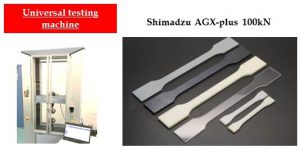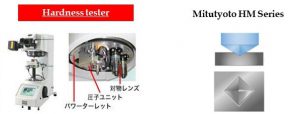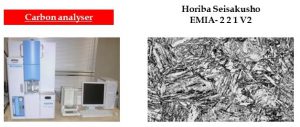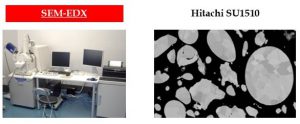Technical Newsletter vol.10 : μ-MIM technology is assured by our latest evaluation system
μ-MIM technology is assured by our latest evaluation system
We consider an appropriate evaluation system development is important as process development. Our company has implemented number of analytical instruments, evaluation systems and special prototype facilities to support our production of μ-MIM.

-Accurate SS curve with high speed sampling-
This machine is for the standard mechanical property tests as tensile, bending and compression testing. Tensile test commonly employed and it is applying controlled tension until the sample breaks. It measures tensile strength, yield point and elongation. If necessary, it is also possible to accept a new alloy powder from test piece producing to measurement .

-Applicable to the hardness distribution-
Vickers hardness is one of the hardness measurement methods. It is calculated from the diagonal of the square indentation obtained by pressing a pyramidal indenter into the work with a predetermined load. In our company, the Mitutoyo micro Vickers hardness tester is introduced, enabling the comparison with the final product.

- C is determining its physical properties -
The specifications for each material are defined, and in particular, martehsitic steel, it is essential to control the content of carbon (C) in order to maintain the micro strructure or mechanical properties, as shown in the left figure. In MIM, adding a large amount of resin to metal powder is unavoidable, therefore control of carbon is very important.

-From observation of powder particles to identification of contamination -
SU1510 is the most versatile model created by bringing together Hitachi High-Technologies Corp‘s know-how. It has installed with the HORIBA EMAX x-act, it is possible to observe the distribution of elements on the surface.

-Comprehend phenomena from accurate sample preparation-
Ion milling E-3500 is a system that creates a cross section of the sample with minimum damaging, such as internal stress and heat. It is possible to observe the state of the plating interface and metallographic structure.
*Remark : This newsletter was originally published on June 7, 2019
